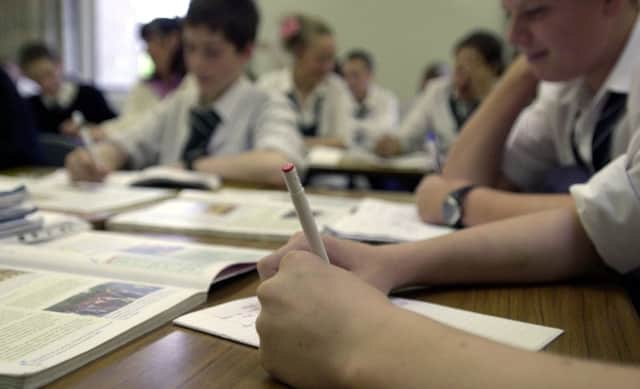Children of 13 asked to choose their gender from list of 20 options


Youngsters aged from 13 to 18 were asked to select from 25 choices, including “gender fluid”, “genderqueer” and “non-binary”.
As well as traditional options of “girl” and “boy”, children were also invited to select from a list that included “tri-gender” and “intersex”.
Advertisement
Hide AdAdvertisement
Hide AdThe national survey was linked from the website of the Children’s Commissioner for England, Anne Longfield, and was forwarded to some schools by local councils.
But the question asking children to define their gender was criticised by the Christian Institute as “totally misleading” and “profoundly confusing” for girls and boys.
Its spokesman Simon Calvert said: “We must not intrude on childhood by deliberately confusing schoolchildren about what makes a boy a boy or a girl a girl just to satisfy adult political agendas.
“We must protect children from being made to feel that passing phases of confused feeling about themselves, which many go through, must be turned into life-changing moral and political decisions.”
Advertisement
Hide AdAdvertisement
Hide AdIt has emerged that the survey has now been withdrawn. A spokesman at Ms Longfield’s office said there had been a “clerical error” and the survey was only a draft.
The survey will be redrafted with the question asking children to define their gender removed, the spokesman added.
Among the schools to issue the survey was Blatchington Mill in Hove, East Sussex, which has gained a strong reputation for its work on LGBT-related issues.
Its headteacher Ashley Harrold said: “Gender identity is a real and valid concern for some students at any school, and we’re no exception.
Advertisement
Hide AdAdvertisement
Hide Ad“We feel our curriculum should address anything that prevents students feeling happy, feeling confident in themselves and feeling accepted by their peers.”
A Brighton and Hove City Council spokesman, which forwarded the national survey to all its secondary schools at the request of Ms Longfield’s office, said it was aimed at exploring young people’s experiences of gender.
The spokesman said: “We want all our young people to feel comfortable with who they are, to understand that the notion of gender can go beyond the traditional idea of simply being either male and female, and to recognise that people can use a range of terms to describe their gender identity.”
Here are the 25 options children were asked to choose from when describing their gender:
• Girl
• Boy
• Tomboy
• Female
• Male
• Young woman
• Young man
• Trans-girl
• Trans-boy
• Gender fluid
• Agender
• Androgynous
• Bi-gender
• Non-binary
• Demi-boy
• Demi-girl
• Genderqueer
• Gender non-conforming
• Tri-gender
• All genders
• In the middle of boy and girl
• Intersex
• Not sure
• Rather not say
• Others